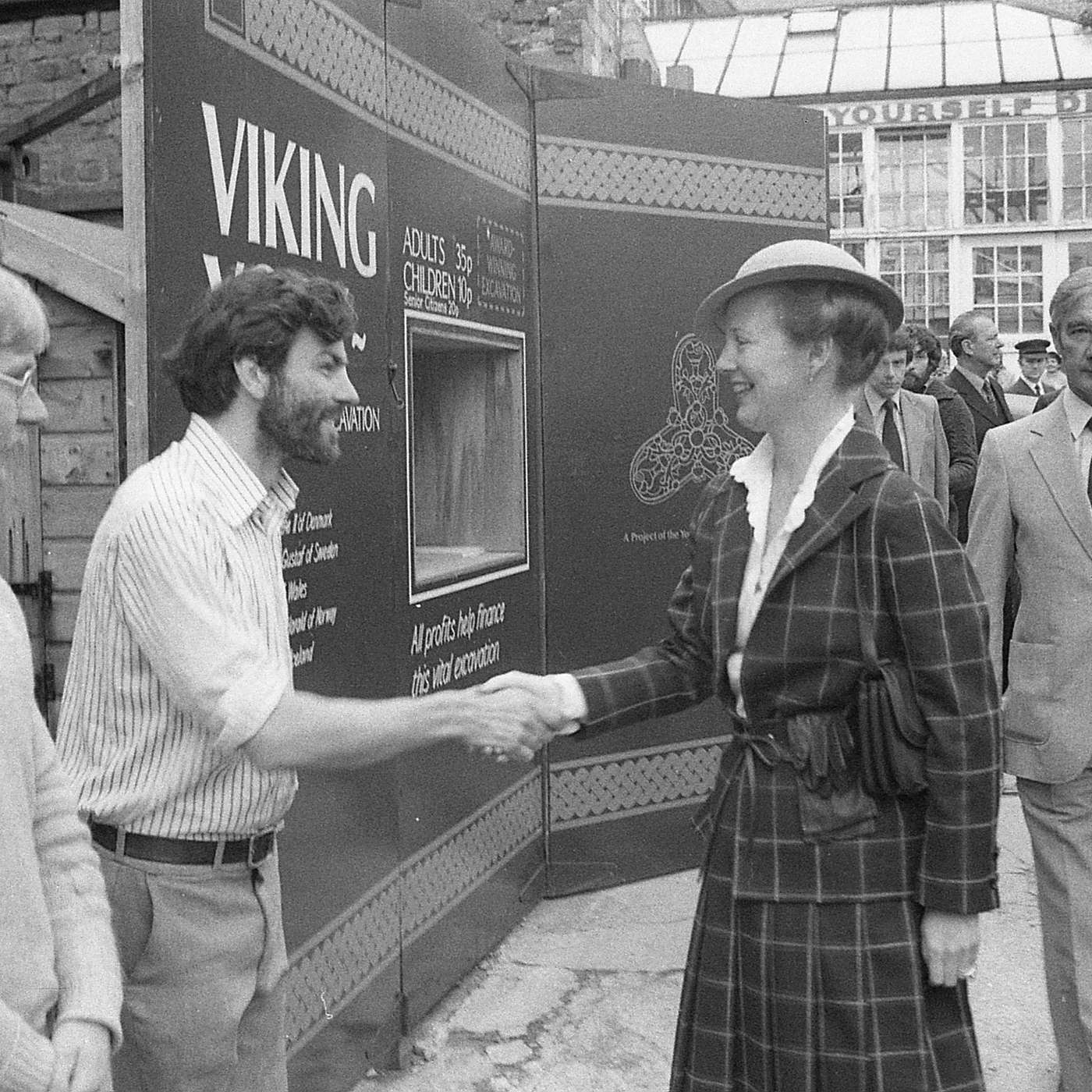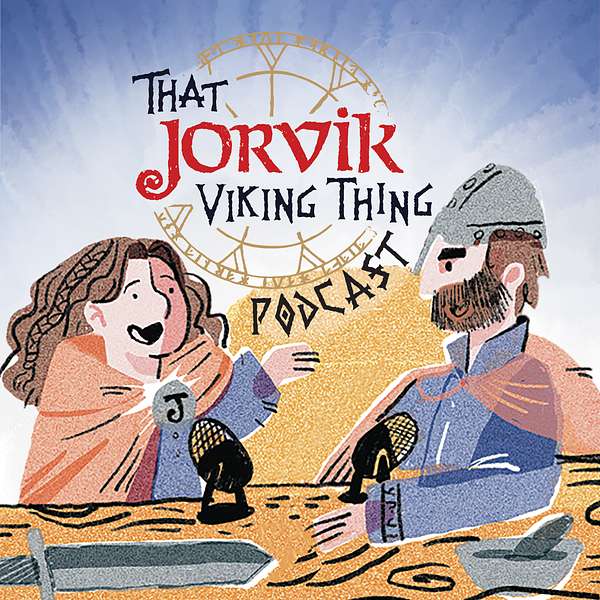
That JORVIK Viking Thing Podcast
In Viking times, a ‘Thing’ was a gathering; a place where leaders and warriors could meet and talk. In the 21st century, our ‘Thing’ is a virtual place where Viking academics and enthusiasts from around the world can come together to share knowledge.
Join Miranda and Lucas, from the JORVIK Viking Centre, as they delve into another fascinating topic about Vikings, archaeology, and more!
That JORVIK Viking Thing Podcast
The Coppergate Excavation: Tales from the Trenches
Welcome back to That Jorvik Viking Thing podcast!
This season, we're excited to take a deep dive into the dig that started it all - the Coppergate excavation! Hear from the archaeologists who worked on the site as well as Peter Addyman, founding director of York Archaeological Trust who was instrumental in keeping the excavation going.
Listen and enjoy, and please consider leaving us a 5 star review on Apple Podcasts, Spotify or wherever you listen!
Miranda 0:00
In 1976, an old Victorian sweets factory located on Coppergate, in the centre of York was slated for demolition. As part of the construction agreement, archaeologists were on hand to make sure that nothing deemed historically significant would be destroyed in the process. What lay only inches beneath the concrete foundations, however, would change our understanding of Vikings and their impact on Britain forever. In Viking times, a "thing" was a gathering a place where leaders and warriors could meet and talk. In the 21st century, our thing is a virtual place where history academics and enthusiasts from around the world can come together to share knowledge. I'm your host, Miranda Schmeiderer. And this season we're doing a deep dive into the Coppergate excavation. So hold on to your helmets for this episode of That Jorvik Viking Thing podcast.
Peter Addyman 0:59
When in the mid 1970s, the old Cravens sweet factory was demolished at Coppergate, trial excavations began to immediately reveal Viking Age remains under the cellar floors that the old buildings which are stood on the site. To everyone's amazement, wooden building standing up to two metres high, all perfectly preserved, their carpentry details intact, began to be revealed.
Miranda 1:25
That is the voice of Peter Addyman, the founding director of York Archaeological Trust who also oversaw the Coppergate excavation. For this episode, we scoured our archives and pulled out some voices from the past - we’ll hear first hand about the excavation from people who were directly involved, including more from Peter. Up until this point, York was known for its Roman archaeology and the only Viking era artefacts found in York were chance finds. They never offered much insight into the Viking Age. But in 1972, the same year York Archaeological Trust was established, a small scale excavation took place on Pavement Street, just one street over from Coppergate. Peter remembers it well.
Peter Addyman 2:02
Evidence from this dig suggested that the Viking Age was the period when that part of Central York was first laid out and developed. More than that, it showed that the remains were miraculously well preserved, with wooden buildings, textiles, leather work, even plant remains, human coprolites and insect remains, all surviving in recognisable form after 1100 years. The dig at Lloyds Bank Pavement showed that more extensive explorations in this area could potentially provide Britain's first detailed knowledge of a major Viking town of Viking Age buildings and ways of life and of the Viking contribution to urbanisation in York.
Miranda 2:45
This small glimpse into Viking era York gave archaeologists a peek at a wealth of information that was still contained in the soil. Up to nine metres of archaeology, most of it from the Viking Age, lay in moist, peaty soil. We'll discuss the science of this waterlogged soil in one of our later episodes. But it was these conditions that preserved the organic remains so well. At most archaeological sites organic material like timber, textiles, even leather, would rot away to nothing, but not here in York. Thanks to the excavations at Lloyds Bank, we knew the Coppergate dig was going to be something special. In 1976, after the Cravens sweets factory was pulled down, ground broke on this new exciting excavation.
Peter Addyman 3:30
Amazingly, the city council acquired an old factory in Coppergate, and determined to pull it down and develop it as a shopping centre. And we thought, wow, if it's the same as Lloyds Bank, that could be a huge opportunity. I remember going to the head of planning and the City Council saying "what you're proposing to do with the site in the meantime?" [They said] "We won't be really developing it for several years, we've now acquired it and we're developing a scheme for shopping centre." And we said "Well, how about knocking it down now? How about we do that?" I said, "so you could actually avoid any delay from archaeology when the development took place?" "Hmmm, yes. We'll think about it." And I went to nobble a few counsellors who were on our committee and said, "Look, let's get this damn thing demolished and do an excavation there." So long story short, amazingly, they said we could have it for two years and they would demolish it and hand it over.
Miranda 4:25
The dig was extended to cover 1000 square metres an area the size of four tennis courts, allowing archaeologists to trowel their way through 2,000 years of history. But it wasn't simply digging down through the layers to go further back in time. As Peter explains here,
Peter Addyman 4:42
I think we concentrated initially on the area at the front of the sites, as I recall, because it turned out that the site had been, in the Middle Ages, sloping down to the river Foss nearby. The Viking levels were clear at the front where the cellars had taken us straight down to them. But at the back, all the Medieval layers survived. So the excavation developed over several years in fact, and it involved work at the front quite rapidly on the Viking Age buildings, but at the back, you had carefully to strip off 16th century and then 15th century and 14th century etc. Until we came at the back, and this was a year or two later, I suppose, down to a very thick layer of 11th, 12th century material. And this apparently have been tipped to bring the site level up to an unreasonably flat surface on which you could build and the various building plots at the front ran back with little alleyways and little fences between them down the slope. So eventually, you know, you were in the Viking Age at the front, and then several hundred years later at the back, quite a complicated thing to control and, of course, a large number of people required for it.
Miranda 5:56
What was supposed to be a six month dig ended up lasting from 1976 until 1981. And hundreds of people came from all over the world to help excavate. The first and most important person to hire though, would be an excavation director. Richard Hall, a former PhD student of Peter Addyman, got the job. Known for his Viking expertise, he was the perfect person for the role. But it wasn't only his knowledge of the past that was important. Being able to bring together people in the present was critical as well, as Peter remembers.
Peter Addyman 6:28
Richard was very good at creating a team and the team spirit and getting everybody happily engaged.
Miranda 6:35
Sadly, Richard passed away in 2011. But he left behind a host of colleagues and fellow archaeologists who fondly remember him, as you'll hear throughout this episode. Obviously, Richard couldn't dig the entire site by himself. The York Archaeological Trust had up to a dozen full time archaeologists on this project at any time, all of them reporting right to Richard. One of these archaeologists was Neil Rogers.
Neil Rogers 7:00
I arrived at Coppergate in 1979, as an 18 year old having just completed my A Levels and secured my place to study archaeology at Durham. How better then to start my year off than to spend two months digging at the famed Coppergate site? It was a real eye opener. The size and depth of the site was simply staggering, with a metal piling supporting the sides and a hive of activity within it.
Miranda 7:25
In addition to the full time archaeologists, hundreds of students and amateur archaeologists from all over the world came to volunteer their time on the excavation. For another archaeologist, Julian Richards, working on Coppergate was the start of a decades long career in archaeology.
Julian Richards 7:43
Working on Coppergate was a brilliant apprenticeship for a budding archaeologist. The fine stratigraphy of the street-front tenements was incredible. Floor layers of silt, clay and ash were often only centimetres thick, but told a story of the occupation and use of the workshops. They demanded painstaking stratigraphic excavation, and in order to make sense of them, you have to understand what was going on.
Miranda 8:08
But it wasn't just professional and student archaeologists that excavated. As part of their community engagement, York Archaeological Trust welcomed inmates on day release from some neighbouring prisons to join them on the excavation. More than once they proved their value, as Julian also remembers.
Julian Richards 8:26
At one stage some of the inmates have Askham Bryan open prison were allowed to work on the dig, helping with some of the manual tests. They also had some specific skills which came in handy one morning. The site was closed with a padlock on the main gate, and that day, Richard Hall, the site director had forgotten his keys. The whole dig team was waiting outside and Richard was getting very angry with himself about the lost working time and was about to set off home to find his keys. However, the prisoners told him not to worry and went into a huddle around the gate. In less than a minute the lock had been picked and the gate was open.
Miranda 9:01
Work on the site was a hard, laborious job. Aside from the gruelling task of slowly scraping away wet soil inch by inch, other tasks had to be done as well. The excavated earth needed to be removed from the ever expanding excavation site. And as the site grew deeper and deeper, they simply couldn't be throwing it over the side of the trench. Instead, more creative measures had to be taken - with some hiccups along the way. Julian recalls one such time.
Julian Richards 9:30
By the time the excavation had reached Viking layers, the site was already very deep, and an electric bucket hoist was used to remove the excavated soil. The winch had hooks, which could take four buckets at a time. And it was the job of one of the summer volunteers to attach the full buckets to the hooks so that there could be lifted clear of the dig. Unfortunately, one day he also attached one of the hooks to his trouser belt. Although the first we knew of it was he shouts as he was hoisted several metres into the air like a circus performer. He was eventually returned safely to Earth.
Miranda 10:04
But the gruelling work paid off and only days into the excavation traces of Viking Age timbers were discovered.
Peter Addyman 10:12
So there was an old pub there called the White Horse and they had cellars at the front. And I said, right Richard, now is your chance to show whether or not this is a site. Just lift the floor of the cellars and see what there is there. And immediately underneath there were timber remains of buildings, end on to the street. And this first sort of trial excavation produced the first decent townhouses from Viking York or indeed from 10th century Britain.
Miranda 10:38
Archaeologist Nicky Rogers was fortunate enough to help excavate some of these timbers.
Nicky Rogers 10:44
I started off working at the back of the site, but after a couple of weeks, I was moved up to the front working within one of the tenements. There were wooden structural remains around the side and a huge amount of brush wood on the floor area, which took a long time to fully reveal.
Miranda 11:01
The wooden remains are some of the most important finds that came from Coppergate. York Archaeological Trust was able to preserve thousands of pieces of wood, everything from wattle that was woven together to make walls and pathways to larger timbers used to build houses. Even simple everyday wooden cups and bowls that give Coppergate - the street of the cup makers - its name. In the 1970s however, British archaeologists did not have much experience preserving 1,000 year old wooden objects, and it was up to Jim Spriggs, conservator of York Archaeological Trust, to determine how to save these priceless artefacts.
Jim Spriggs 11:40
The waterlogging at Coppergate had caused the spectacular survival of the original timbers and wattle and daub that made up the buildings and structures that stood on the site in the Viking period. Indeed, they started appearing within days of beginning work, and we immediately knew that we'd found something of extraordinary archaeological significance. For me, the excitement was slowly tempered by the realisation that I was chiefly responsible for looking after all this wood, both on site during excavation, then getting it lifted and stored safely, and probably then also conserving it permanently.
Miranda 12:14
Later on this season, we'll be exploring the science behind not only the soil and how it preserved these artefacts, but also the new techniques and technologies that Jim and other conservators at Coppergate were able to come up with. For the archaeologists on site, there was one simple instruction that they had to remember. And Nicky remembers that well.
Nicky Rogers 12:34
Every so often, Richard Hall would come along and see how work was progressing. His frequent instruction to me was, "keep that wood wet!"
Miranda 12:43
Richard Hall was involved in every aspect of the dig from organising what volunteers would work on to overseeing the excavation and preservation of all the artefacts coming up out of the ground. He even went on daily tours of the site. Most of these tours were uneventful, but Julian remembers one that was a little bit more eventful than usual.
Julian Richards 13:04
Richard Hall had the habit of going for a tour of the site towards the end of each working day, getting an update on progress from each of the excavation assistants and writing up his site diary. I was working on one of the street-front tenements at the time, and was steadily troweling my way down through the thin occupation levels. Richard stopped beside me and asked for an update. I started to tell him about the sequence of layers, but then spotted that he was standing on a pewter Viking disc brooch, which had just been exposed on the surface. It survived the experience, and is on display in the Jorivk Museum, minus the nick taken out of one corner where Richards boot had come to rest.
Miranda 13:44
By the time the excavation wrapped up, archaeologists had uncovered four and a half tonnes of animal bones, 230,000 individual pieces of pottery, 750,000 oyster shells, and thousands upon thousands of objects from the everyday life of the Vikings who lived right there on Coppergate. Archaeologists had also taken 12 tonnes of soil samples for further analysis, as well as 11,000 drawings from different archaeological features to provide context for all of these discoveries. Peter gives us a little perspective on all of these amazing finds.
Peter Addyman 14:23
What were the most memorable finds? it's difficult to select when there were more than 39,000 of them, but a squashed beehive, complete with well preserved bees stands out in my mind. All the various evidence for coin production, including the immensely rare dies for striking Viking Age coins, and lead trial pieces, featuring strikings from other dies. These opened a window on Viking Age commerce. What was the most memorable day? That came after the main dig ended, as the site was being developed when the famous Coppergate helmet was found - arguably the finest Anglo Saxon helmet ever discovered, and certainly the best preserved.
Miranda 15:10
Make sure you tune in for our next episode, where we'll discuss some of these famous finds with one of our Viking interpreters here at the Jorvik Viking Centre. As mentioned before, this excavation was not hidden away from the public. Instead, the Coppergate excavation welcomed more than 500,000 visitors to view the archaeologists as they worked. Peter explains the setup.
Peter Addyman 15:33
So I said, "okay, Richard, now we have a problem, it's a huge site, it's going to be really expensive." So while he was continuing to do the work on the little areas in the front, which got down to Viking levels because of the callers, we started to talk to our friends at the fundraising group board and communications. And I think we'd also been saying, you know, we really need to get more and more funds into York. And I remember their officer who was in charge of our account saying to me, "we really need to publicise something that will grab the attention of the public if we're going to have a proper fundraising campaign. Tell us what you're digging." And as you know, "well, we're digging the College of the Vicars Choral of the Minster." "What's that," he said. I said, "well it's where the priests who used to do the singing services, deputising for canons, used to live." He said, "What else?" I said, "Well, we got quite a large excavation going on there on the Roman legionary fortress." "Oh, is that that's, that's a bit more interesting, might be able to do something with that. Anything else?" "I think, well, we just found all these Viking buildings on the street front in Coppergate." "Ah," he said "Vikings? Yeah, they've got sex appeal, I think I could do Vikings." So that was the first thought of pushing the Viking theme of York, which very few people knew anything about at all at that stage. So he set up this initiative of Viking finds, and the press and the television fell for it. And they started covering everything that Richard found. And some of the things were great, you know, they were quite unique. And they could make an awful lot out of a complete Viking shoe, especially if it was recognisable and a nice design and so on. And so that began this PR exercise. And having actually started that theme, I got to get the public involved, we've got to get them onto the site. And I said to Richard, "we got to get public on the site." "Never!" But eventually, we did. And the site had a sort of walkway around the edge. And people were charged - I didn't know what it would be in those days, but a pound I suppose nowadays to go and look. Eventually we got placards on the front and quite large numbers of people coming to see it.
Miranda 17:49
From the very beginning, York Archaeological Trust has been bringing archaeology to the public. It's hard to believe but back in the 1970s, most people weren't too interested in archaeology, especially here in York. To adults, especially these excavations got in the way of their usual business and construction projects. Instead of trying to make them understand the value of archaeology, Peter tried a different approach, as he explains here.
Peter Addyman 18:16
It was a question of changing perceptions and winning minds and influencing people. It struck me that one of the quickest ways to a person's heart is through its child. And one of the first appointments we made in setting up a staff at the York Archaeological Trust was lovely lady called Mrs. Gota. She's now a mature elderly lady, but she was quite a feisty ex teacher. And I said Sheila, we're going to do excavations around the city, I would like you, if possible, to get each school to send visitors to see the digs. And if not, perhaps you could go and give them a little talk about what we're finding. Sheila managed to develop this educational programme so that in the first excavations, there was always a viewing platform where kids could come and Sheila would come in two or three schools a day with 20 kids and enthuse them, let them handle artefacts and so on. And we found that they would go back and tell their parents about what a terrific time they'd had on this dig, and that was straight into the community. So there was a broadly based campaign of getting archaeology to be a good thing rather than a bad thing and something that everybody knew about and everybody wanted to happen, so that if, for example, a city centre site was to be developed by the corporation, city councillors would know that actually to do the dig first would be quite a popular thing to do, a sensible thing to do.
Miranda 19:37
The tactic worked. Not only did half a million people visit the Coppergate excavation, but since then, the Jorvik Group has welcomed countless schools through our doors, even starting a new digital format in recent years for schools that can't make it to us. Instead, our Viking interpreters connect with them through Skype and Zoom, bringing children from all over the world face to face with our Viking past. Alongside members of the public, members of royalty across Europe were interested in the site as well.
Peter Addyman 20:05
We need a distinguished group to sponsor it and a major fundraising campaign. We're going to have to heighten the profile of this. Who's the most famous archaeologist in Britain? Famous? They're not really famous. But the Prince of Wales did an archaeology degree at Cambridge. That's right, we'll start with him then, really soon as possible. And I wrote some silly letter to the inquiry and they said yes, but that that's an honorary committee. Who's a more practical sort of down to earth? Well, I did read archaeology at Cambridge with Princess Margrethe, who's now the queen of Denmark. You can get her. I think, probably would, yes. So I set off to Amalienborg Palace. She said, I'd love to do that. So we had the Queen of Denmark, which was very, very relevant.
Miranda 20:59
Famously, Prince Charles visited the site and became one of its patrons. However, interested in this incredible Viking site to spread to Scandinavia and their royal families. Queen Margrethe II of Denmark visited the site in 1980, but was a patron long before that. King Carl XVI Gustaf of Sweden, as well as King Harald V of Norway, who was still Crown Prince during the excavation both were patrons as well, though they didn't visit the site in person. The Coppergate excavation was possible only through the support of these visitors. The original excavation was only supposed to last six months, so funding was an ongoing issue. But along with paid tours, visitors had the chance to purchase souvenirs from the site, including some of the 750,000 oyster shells that we dug up. Not exactly best practice today, but there were certainly shells to spare in these trenches.
Miranda 21:54
The popularity of the Coppergate excavation proved one thing: people wanted more Vikings. As the excavation ended and the shopping centre, he started construction, plans to create a museum more drawn up, but this museum wouldn't be the usual visitor experience, full of glass cabinets and blank white walls. Instead, the Jorvik Viking Centre was built underground on the site of not just the excavation, but of the original Viking era Street. Opening in April 1984. Visitors boarded Time Cars, the predecessor of the time capsules we use today, and they rode through a recreation of coppergate experiencing the sights, sounds, and most famously the smells as the Vikings would have known them. As it turns out the smells were memorable for the archaeologists as well as both Neil and Julian remember.
Neil Rogers 22:44
Once when I was excavating in one of the wicker-lined pits on a hot July day, the smell of rotten, waterlogged organic material, probably poo, was still lingering.
Julian Richards 22:57
One of the abiding memories for the diggers was the ripe smell of many of the Vikings cesspits as recreated in Jorvik. Once the capping had been removed, the cess layerswere often as smelly and ripe as if they had been deposited that day.
Miranda 23:11
Behind the scenes, countless people were involved in the three year project to design and build the Jorvik Viking Centre. Alongside the archaeologists, conservators and scholars, specialists badgers plotters, sailmakers sculptors, taxidermists, silversmiths, wood carvers, leather workers, and of course, coppers were enlisted to recreate what life was like 1,000 years ago. Since 1984, almost 20 million people have visited the Jorvik Viking Centre, each taking away their own memories and experiences. Many people remember the artefacts, the ride, and yes the smells. But for everyone involved in the Jorvik Viking Centre from the excavation to the museum today, it's the people that they remember. Our last voices are those of Nicky and Neil Rogers, who met on the excavation and made a lasting connection.
Nicky Rogers 24:07
Working on excavations is a very sociable experience and friends are often made on them. In my case, I also met my future husband. Nine years later, I was appointed to the post of artefact researcher at York Archaeological trust, and returned to York in 1988. And I've worked as an archaeologist in the city ever since.
Neil Rogers 24:30
I particularly enjoyed the international team activity and such friendly people. I made friends with people of all ages from Sweden, Denmark and the USA. Coppergate resulted in several long lasting relationships, and I met my future wife there. Coppergate wasn't just about making amazing archaeological discoveries.
Miranda 24:53
We hope you enjoyed our deep dive into the coppergate excavation. Special thanks go to Peter Addyman, Julian Richards, Neil Rogers, Nicky Rogers and Jim Spriggs for lending their voices and memories to this episode. Stay tuned for the rest of the season as we look at the Viking era finds that came from this excavation, examine the non-Viking finds that often get overlooked, learn about how these artefacts were preserved in the ground and now in our museum, and finally, discuss how Coppergate changed our understanding of Vikings in the British Isles. Even more exciting, the Jorvik Viking Centre re-opens the 17th of May 2021 - book your tickets now at JorvikVikingCentre.Co.Uk. Come see where it all happened and look at these amazing finds for yourself!
Miranda 25:29
That Jorvik Viking Thing podcast is an Audible Associate, click on the link in our show notes or go to www.audibletrial.com/vikingthing-21 to sign up for a free 30 day audible trial. When you do, you'll get a free audiobook download you'll also be supporting your favourite Viking podcast. Even better, the audio book is yours to keep forever, no strings attached. This time we recommend "Archaeology: Life in the Trenches" by Nick Adams. If you enjoyed hearing from the diggers themselves today, you'll love hearing Nick's stories of his 40 years in British and Canadian archaeology. Everything from his early life digging in the UK. To his time as a government archaeologist in Ontario, Canada, you'll listen to Nick himself tell you the tales of what it's really like to be a field archaeologist.
Miranda 26:20
Thanks for listening to That Jorvik Viking Thing podcast. You can find us on Spotify, Apple podcasts and wherever you get your podcasts. If you'd like to support That Jorvik Viking Thing please visit JorvikThing.com to make a donation. Don't forget to hit subscribe so you don't miss the next episode of That Jorvik Viking Thing podcast.
Miranda 26:47
That Jorvik Viking Thing Podcast is a production of the Jorvik Group and the York Archaeological Trust researched by Miranda Schmeiderer and Ashley Fisher. Written and produced by Ashley Fisher. Sound designed and edited by Miranda Schmeiderer.
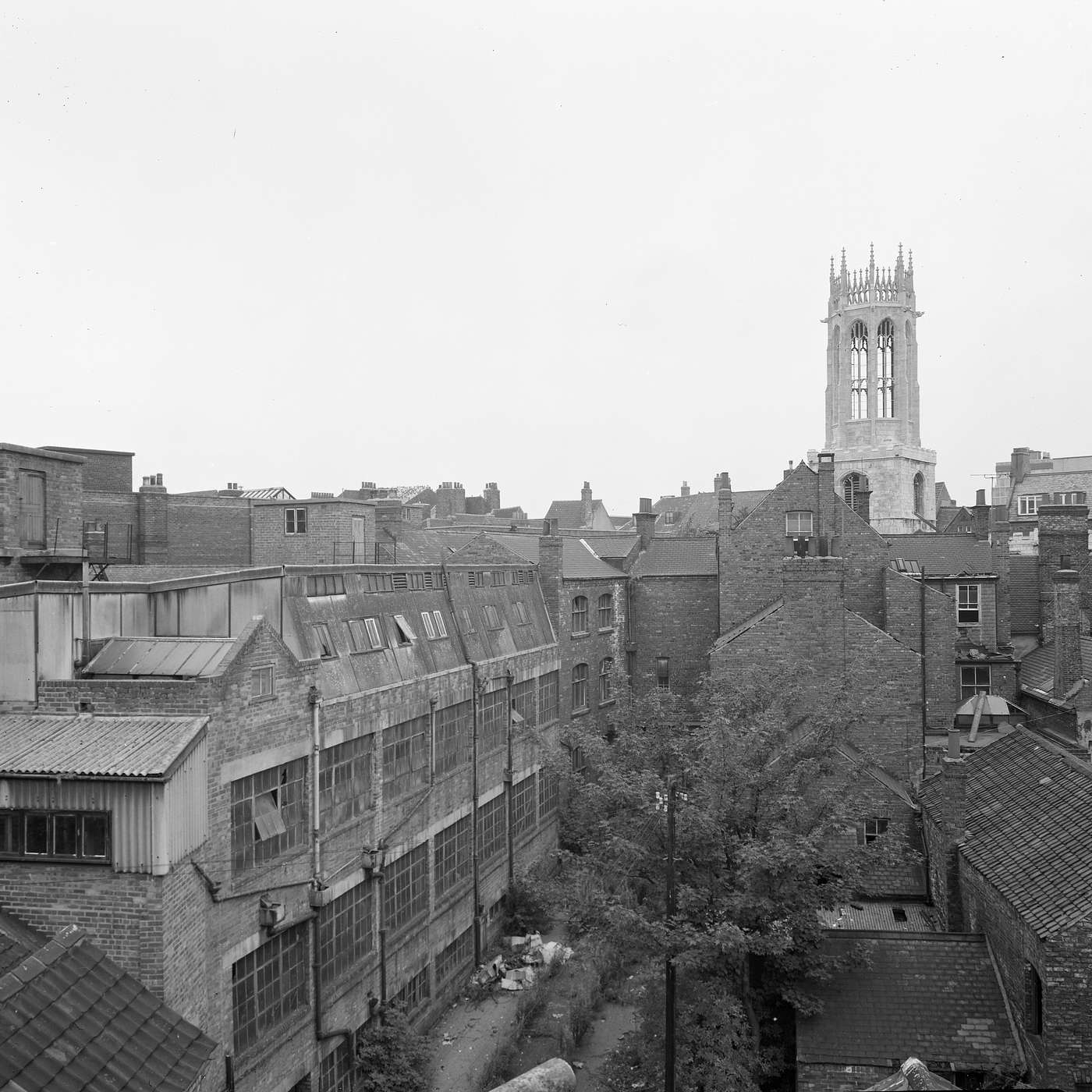
.jpg)
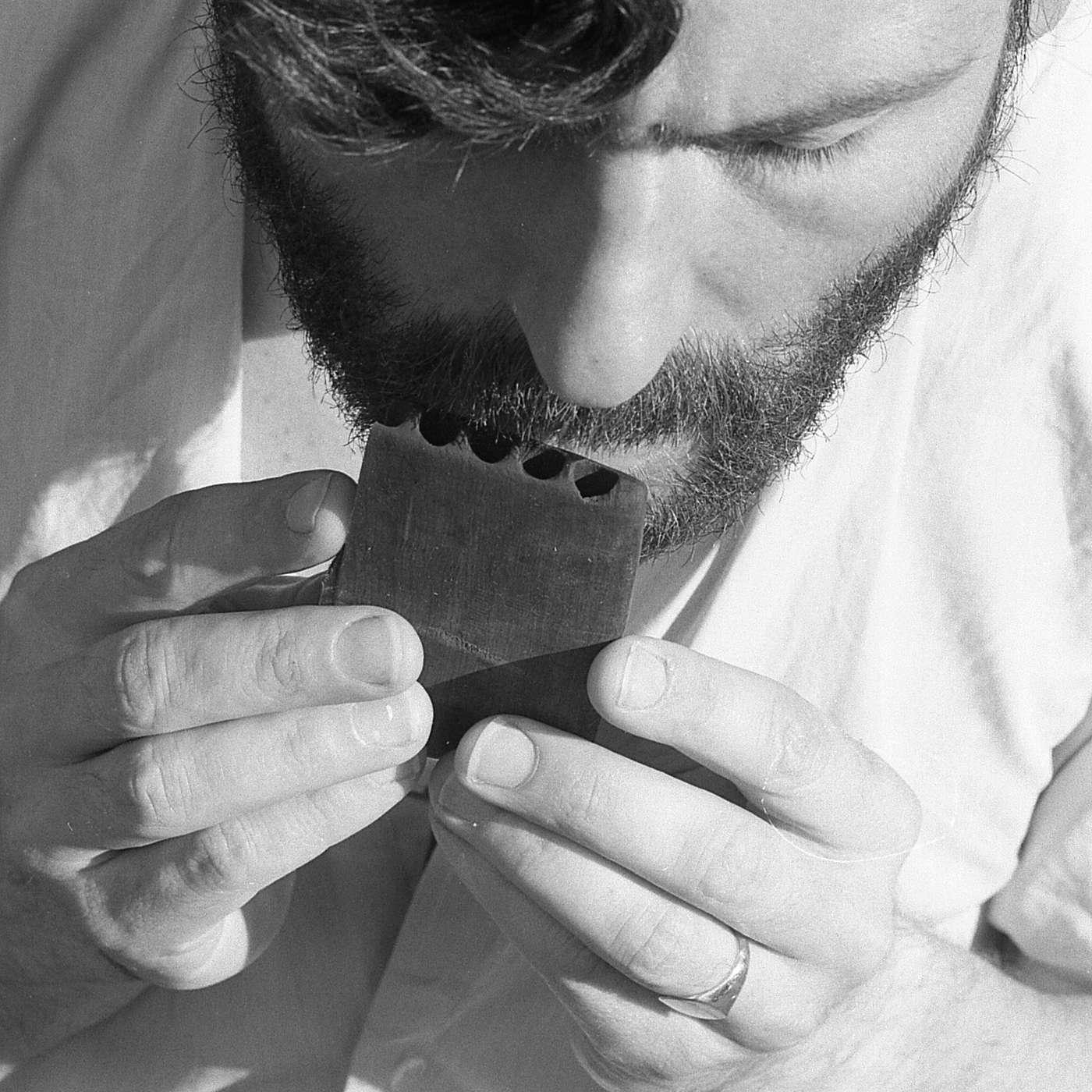
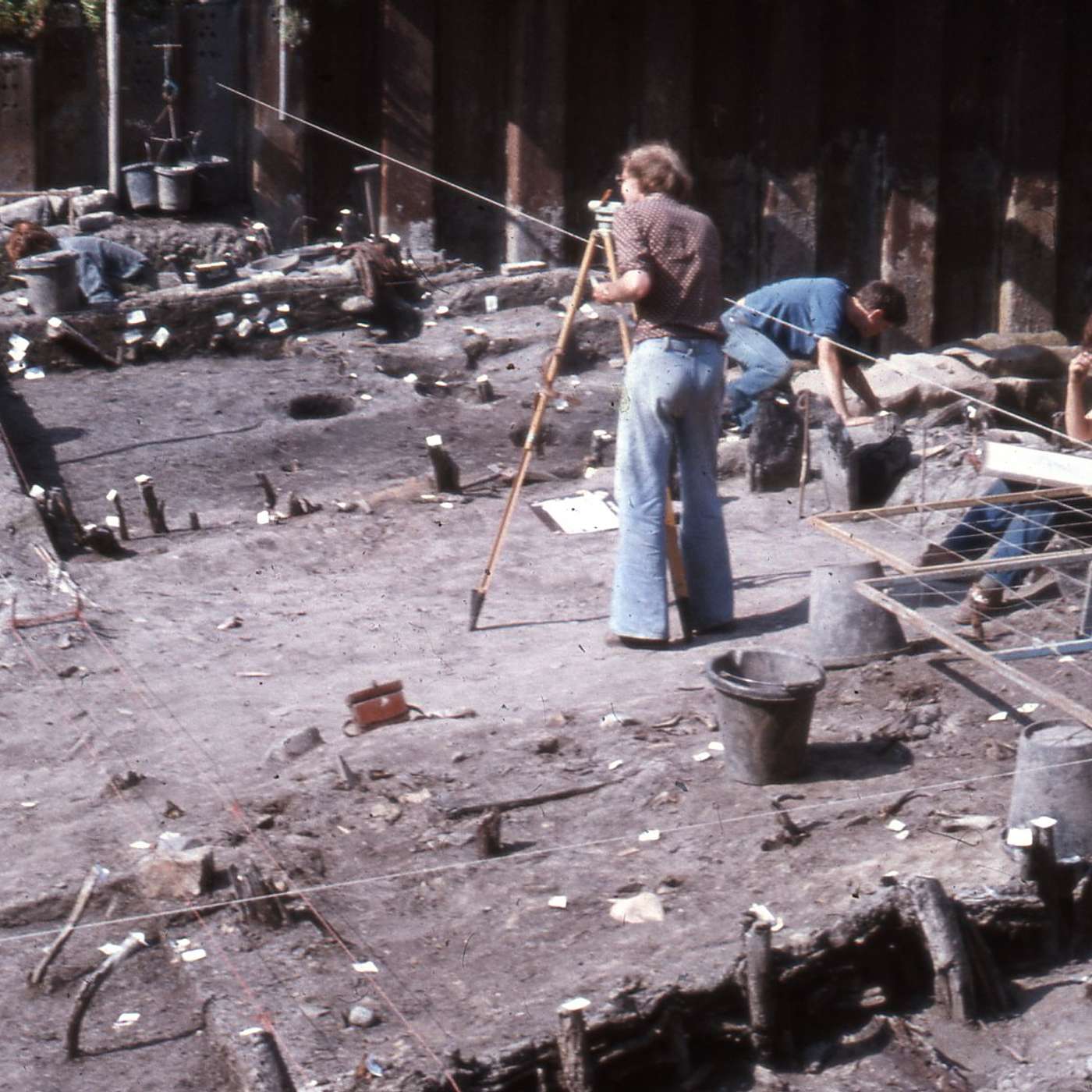
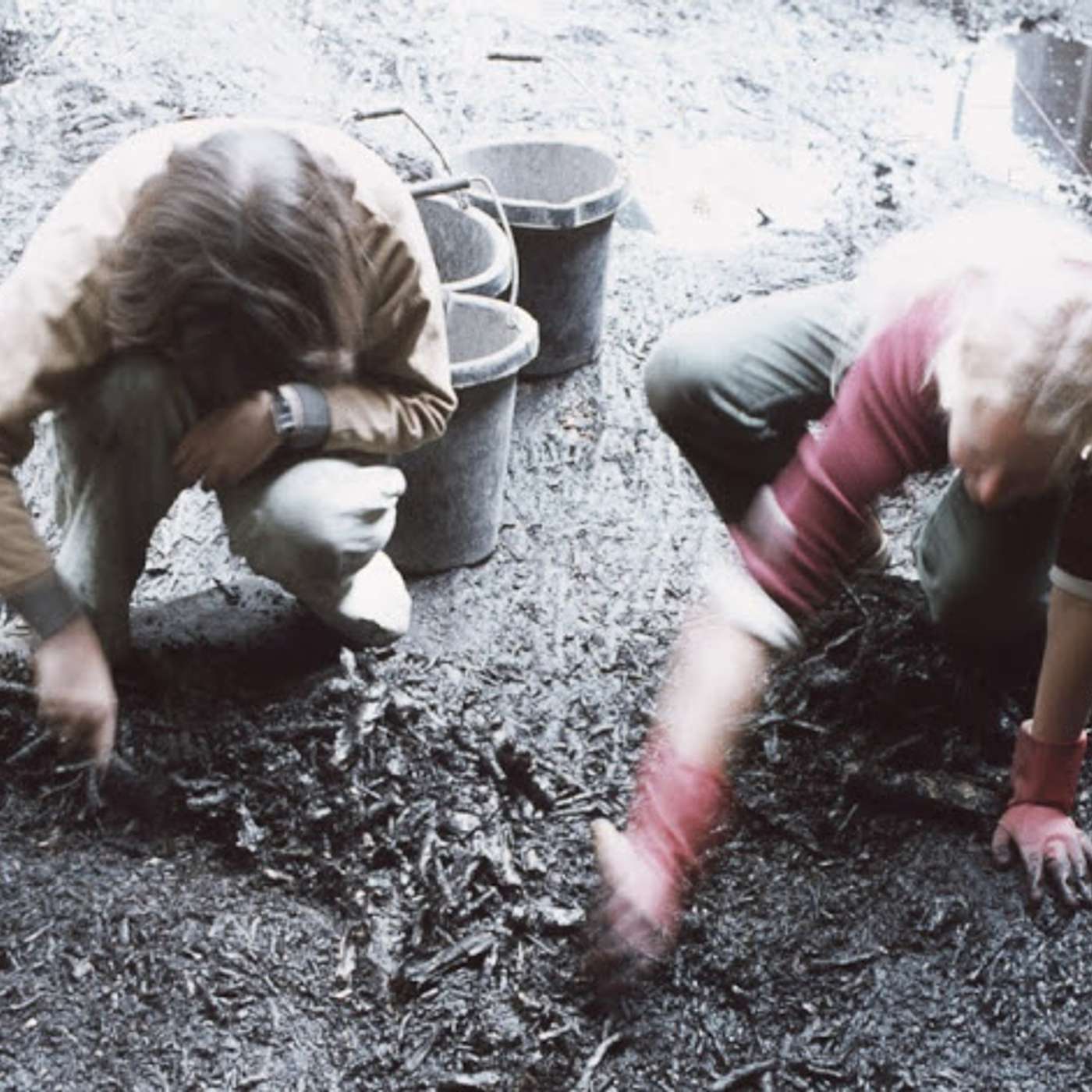
.jpg)
